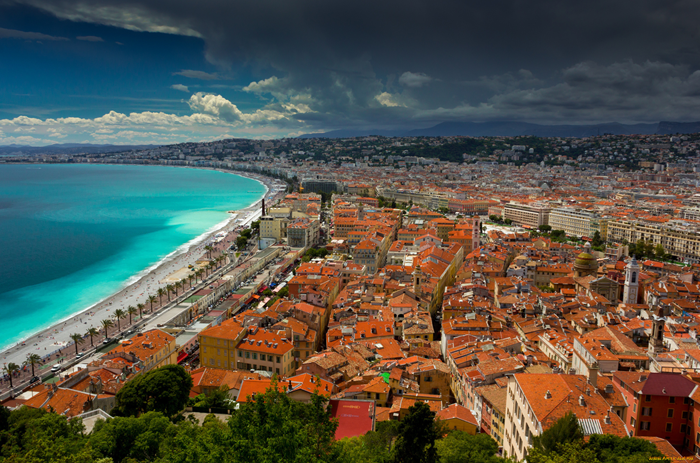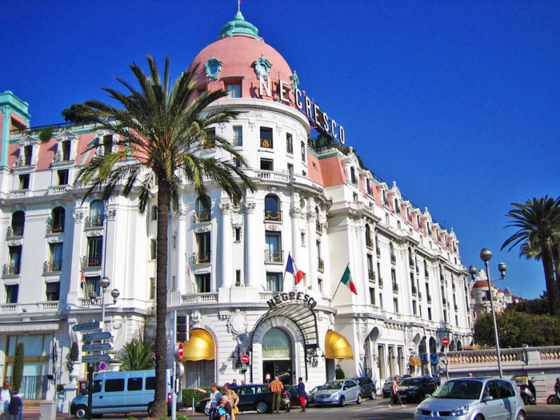The city is divided into two parts by the Paillon River, which is now partly hidden underground. On the left bank, the Italian architectural influence is stronger, on the right bank, the French.
It is worth noting that Nice has changed hands many times – from the Kingdom of Provence to the House of Savoy, then briefly again to the French, then again to the state of Piedmont-Sardinia, and finally became part of France only in 1860. One of the symbols of the influence of the traditions of both countries can be considered the famous Place Masséna (a military leader during the Napoleonic Wars), which was designed in 1834 by Turin native Joseph Venier. Its architecture refers both to French streets and to Turin squares. The houses built in the second half of the 19th century in the Nice (niçois), or Italian historical, style are located mainly in the Old Town (Vieille Vill), the Port Lympia and the center of Nice. They attract a predominantly European clientele who value history, old-world charm and location. A common investment option is to divide a large apartment into several smaller ones, restore them and rent them out.
The Golden Square (Carré d’Or), the Cimiez quarter and the Promenade des Anglais are dominated by houses in the incredibly elegant Belle Époque style – a French interpretation of Art Nouveau (late 19th – early 20th centuries), as well as in the no less luxurious Art Deco (1920-1940s). Apartments and villas with high ceilings, fireplaces, stucco are prized by buyers from all over the world who are looking for prestige and space.
Houses built between the 1960s and the early 2000s are usually not distinguished by exquisite architecture, but are conveniently located throughout the city – the Fleurs-Gambetta, Gorbella, Madeleine and others. Often, residences of this period can boast a large closed area with its own park, swimming pool, tennis court. Such houses are typical for the Fabron area, the upper part of the Mont Boron, Cimiez. Since the early 2000s, construction in Nice has not been so active. Due to the limited space, buildings are erected point by point. At the same time, new houses are very valuable and quickly find buyers. Clients are willing to pay a lot for modern comfort and compliance with all current building codes, which are becoming more and more stringent every year.



